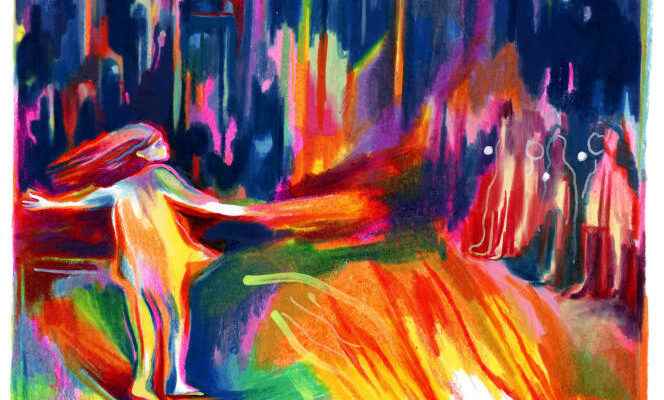Surrounded by trees and the croaking of crows under cloudy November skies in Tehran, director Hamid Pourazari and actress Soheila Golestani present their latest performance. The man, dressed in black, waits on a stone staircase, staring at the camera, motionless. The young actress, also dressed in black, her short hair revealed, joins him. Then about fifteen other young actors, men and women, all in black, arrive one after the other. Women do not wear the veil, which is compulsory in the Islamic Republic of Iran. The group remains motionless. No words, no gestures.
The faces are frozen, the gazes fixed, determined. Posted on the Instagram pages of Hamid Pourazari and Soheila Golestani, the scene is accompanied by this text: “The show is over. The reality unfolds. Our real heroes are anonymous people. We do not erase our mistakes. We try again and we learn. The ways are multiple and the hope for a new day is immense. “Woman, life, freedom.” »
Actresses behind bars
With these words, the duo supports the ongoing uprising in Iran and stages the solidarity of men and women in the rejection of the hijab. He also denounces the hypocrisy and lack of courage in the world of theater and cinema, where women play veiled, while more and more Iranian women are walking in the street with their heads uncovered. At the risk of their lives.
Like many Iranians, Hamid Pourazari and Soheila Golestani chose an artistic form to publicize their revolt, despite the danger. On November 29, two days after their performance was posted on social media, they were arrested. Both were held in the notorious Evin prison, north of Tehran, which holds many political opponents. The director and actress were released on December 11 on bail. Shortly before this video, several colleagues of the actress had dared to take a picture or film themselves without their headscarves. At least a dozen have been summoned by Iranian justice, some arrested. Most were released on bail. But some are still behind bars, awaiting trial.
The body at the service of the uprising
Despite the reprisals, this performance proved to be contagious. 1er December, students from the Faculty of Art of the University of Tehran, their faces covered by masks and their eyes hidden under dark glasses, played a variation within their establishment. Men and women without veils climbed the steps, while some tried to prevent them, thus signifying the repression of power. The students, en masse, finally succeeded in neutralizing the oppressors.
You have 55.15% of this article left to read. The following is for subscribers only.
